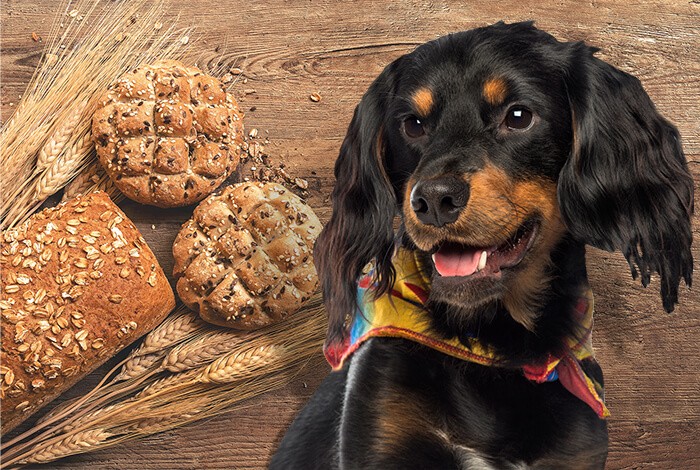Can dogs eat bread? Yes and no. There are many varieties of bread out there, including wheat, sourdough, garlic bread, and plain bread. Unfortunately, not all of these are safe for dogs and may put their lives at risk of poisoning and other alarming health conditions.
To make sure you share dog-friendly bread with your pooch only, we have listed which bread varieties are safe and which ones are harmful to dogs.
Beware of the Deadly Bread Varieties
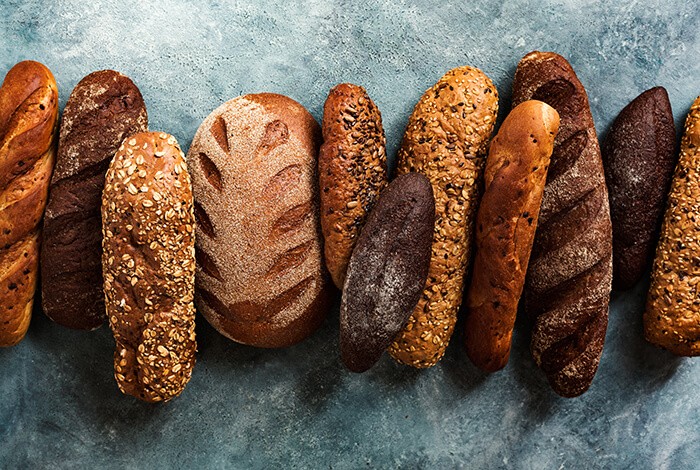 The dangers of bread commonly lie in the additional ingredients and flavorings used to create it. So let’s find out what types of bread should not be shared with our dogs.
The dangers of bread commonly lie in the additional ingredients and flavorings used to create it. So let’s find out what types of bread should not be shared with our dogs.
Can dogs have bread with raisins?
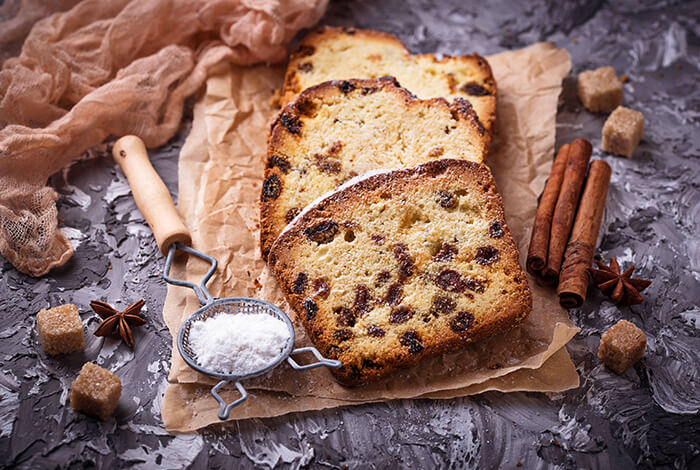 Definitely not. Raisins have an unknown substance that is extremely toxic to dogs. Severe raisin poisoning can cause potential sudden kidney failure. It may even result in loss of life without prompt vet care.
Definitely not. Raisins have an unknown substance that is extremely toxic to dogs. Severe raisin poisoning can cause potential sudden kidney failure. It may even result in loss of life without prompt vet care.
Can dogs have bread with chocolate?
No. Chocolate contains highly toxic chemicals called theobromine and caffeine, which can harm our canine companions. Dogs with severe cases of chocolate toxicity may experience seizures, tremors, and heart failure. So, those bread types with choco swirls or chocolate chips keep them away from Fido.
Can dogs have bread with nuts?
No, keep it away from Fido. Most nuts are high in fat, which can cause excessive weight gain and pancreatitis in dogs. Other nuts, such as macadamia nuts, can cause poisoning.
Can dogs eat garlic bread?
 Garlic bread is completely off-limits to pooches. Aromatic plants from the allium family, including onions and garlic, are bad for dogs. They contain a toxin that destroys red blood cells, which can result in anemia.
Garlic bread is completely off-limits to pooches. Aromatic plants from the allium family, including onions and garlic, are bad for dogs. They contain a toxin that destroys red blood cells, which can result in anemia.
Without immediate treatment, a dog suffering from onion or garlic poisoning may end up having organ damage and failure.
Can dogs have sugar-free bread with xylitol?
A big fat no. Xylitol, an artificial sweetener, and a sugar substitute is commonly found in many food products like peanut butter, jams, and baked goods. Unfortunately, it is extremely toxic to dogs as it can lower blood sugar, cause seizures, and induce liver failure.
Skip the Dough!
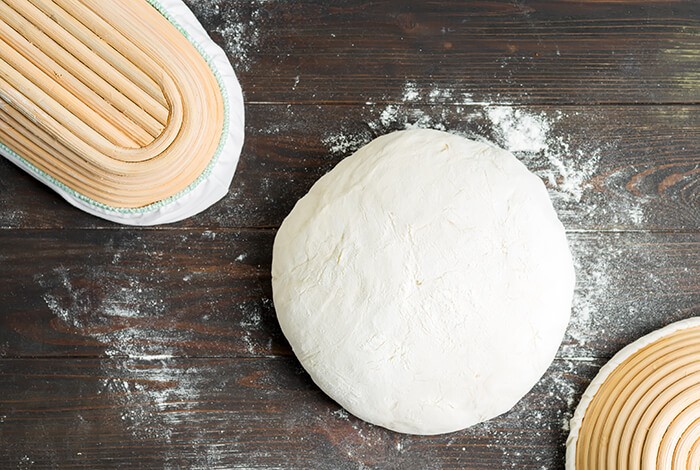 Dogs should never eat bread dough. If it is accidentally ingested by your pooch, it will continue to rise and expand in his stomach. This will then result in stomach blockage and bloating.
Dogs should never eat bread dough. If it is accidentally ingested by your pooch, it will continue to rise and expand in his stomach. This will then result in stomach blockage and bloating.
However, the most concerning thing about raw bread dough is that it can induce alcohol toxicosis. Dogs with this condition show lethargy, depression, seizures, hypothermia, unsteady gait, and coma. If your pooch shows these symptoms, immediate medical care is required.
What Kinds of Bread Are Safe for Dogs Then?
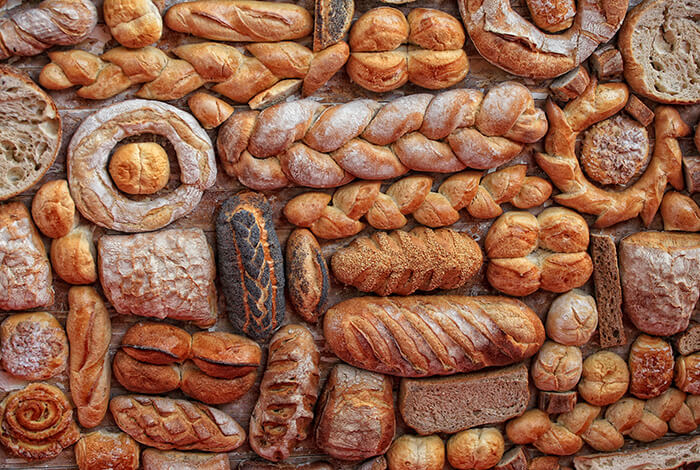 Generally, most types of bread are okay for our furry pals to eat, provided that they don’t contain ingredients that are harmful to dogs. Take a look at some of the types of bread that are considered safe for your pooch to eat.
Generally, most types of bread are okay for our furry pals to eat, provided that they don’t contain ingredients that are harmful to dogs. Take a look at some of the types of bread that are considered safe for your pooch to eat.
Can dogs eat banana bread?
Banana bread is a delicious treat for dogs. However, it should be served in moderation. It often has added sugar, which offers no beneficial value to your furry companion.
Can dogs eat wheat bread?
If you are wondering, ‘Can dogs eat whole wheat bread?’ The answer is yes. It is better than other kinds of bread since it is more nutrient-dense. This makes it a healthier treat for dogs. Always serve it plain and in a moderate amount.
Can dogs eat white bread?
White bread is safe for dogs to eat, but it isn’t the most nutritious choice. Moreover, since it is extremely processed, it has no known real health benefits.
White bread is also high in sugar, carbohydrates, and fats, which are unhealthy for your furry friend. So only feed your dog white bread sparingly.
Can dogs eat sourdough bread?
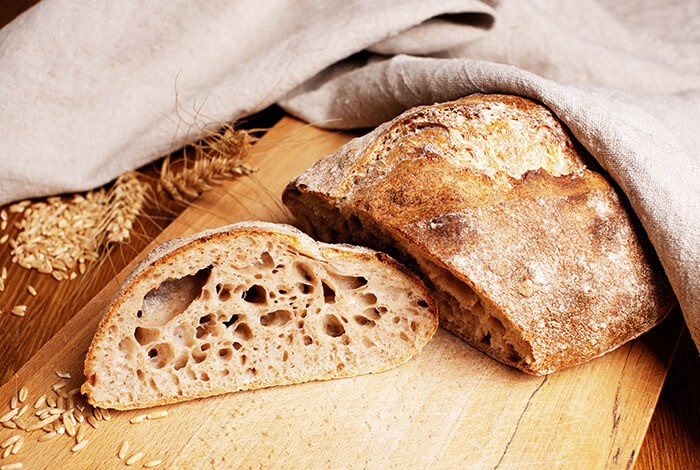 It’s fine to feed your dog sourdough bread as long as it is fed occasionally. It is best served plain.
It’s fine to feed your dog sourdough bread as long as it is fed occasionally. It is best served plain.
Can dogs eat rye bread?
Rye bread should only be an occasional treat for our furry friends. Rye bread should be served plain to prevent the risk of stomach problems.
Can dogs eat brown bread?
Yes, your dog can eat brown bread. However, it should be given in small amounts to avoid upsetting your dog’s stomach.
Dogs with grain or wheat allergies are better off without bread in their diet. That’s because it may trigger painful and uncomfortable allergic reactions. Let them stick to grain-free or gluten-free diets to prevent allergies.
What Are the Benefits of Bread to Dogs?
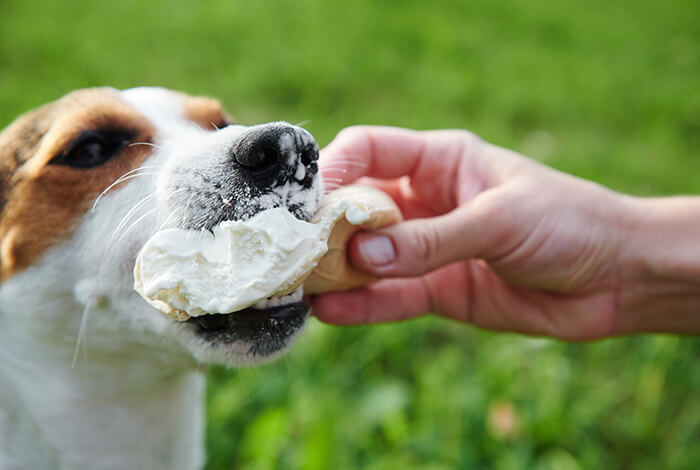 There aren’t any significant benefits in adding bread to dog food as it has no nutritional value for dogs. Bread is mainly made up of carbohydrates, which can cause obesity and cardiovascular diseases in dogs if fed excessively. Therefore, bread should only be given as an occasional treat to dogs.
There aren’t any significant benefits in adding bread to dog food as it has no nutritional value for dogs. Bread is mainly made up of carbohydrates, which can cause obesity and cardiovascular diseases in dogs if fed excessively. Therefore, bread should only be given as an occasional treat to dogs.
Also, dogs with balanced diets don’t require supplementation with human foods to meet their nutritional needs.
However, bread can be a handy remedy for a few health problems. If pooches have mild upset stomachs, letting them eat plain wheat bread may help alleviate the symptoms. However, before doing so, consult the vet to ensure that it is an appropriate remedy for them.
Bread is also believed to act as a cushion in a dog’s digestive tract. So, it is given to dogs that ingested sharp fragments like splintered bone. This will prevent intestinal perforation and keep your dog safe from internal injuries until they excrete the harmful object through their stool.
Some pawrents also claim that bread has the ability to wad up linear foreign bodies such as yarn. These foreign objects can then be easily passed through the digestive tract and eliminated as waste matter.
Although bread can soothe a few health problems, it is not a cure-all. If a dog’s condition shows no improvement, stop giving him bread and take him to the vet right away for treatment.
When Is Bread Bad for Dogs?
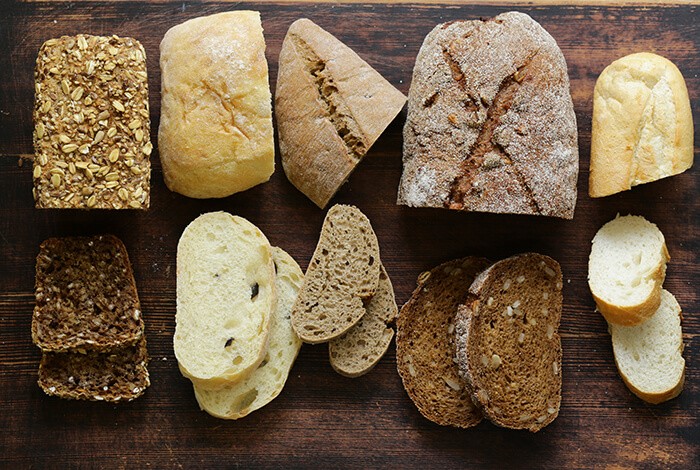 Overfeeding your dog with too much bread can result in disastrous consequences. Most types of bread are high in carbohydrates, which can cause obesity in dogs. It also exacerbates certain diseases, such as diabetes and osteoarthritis.
Overfeeding your dog with too much bread can result in disastrous consequences. Most types of bread are high in carbohydrates, which can cause obesity in dogs. It also exacerbates certain diseases, such as diabetes and osteoarthritis.
Bread has a high glycemic index too. So, if you’re feeding your dog bread excessively, he may experience a sudden rise in blood sugar level.
Feeding bread to your dog frequently is discouraged. Avoid making it a part of your dog’s diet and serve it in small portions only.

